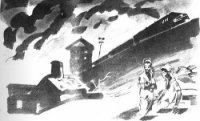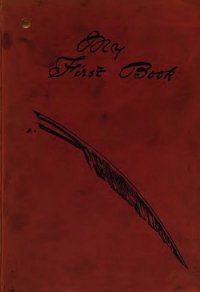Operation Nemesis: The Assassination Plot that Avenged the Armenian Genocide - Bogosian Eric (мир книг .txt) 📗
The Russians had had enough of a man they considered a dangerous loose cannon and began operations to eliminate Enver. At the same time, his Basmachi followers began to melt away. In early August 1922, a young Armenian Chekist named Georges Agabekov (Nerses Ovsepyan) led an attack team into the heart of the daunting Central Asian desert.28 Agabekov tracked Enver to his lair and then alerted Red cavalry stationed nearby, who surrounded and ambushed his group. The story that an Armenian, Hagop Melkumov (Melkonian), actually fired the rifle that killed Enver is apocryphal.29 Other versions claim that Enver was so mutilated by machine gun fire that it took two days to identify his body definitively. In 1996 Enver’s body was exhumed from its grave in Ab-i-Derya and returned to Istanbul. Today his memorial gravesite stands a few yards from Talat’s on Eternal Liberty Hill in Sisli, testimony to the restored reputations of both leaders among the Turkish public.30
Dr. Nazim
Dr. Nazim Bey Selanikli (b. 1870) was a founding member of the Central Committee of the CUP and a key leader of the Special Organization. He was also instrumental in covering the CUP’s tracks before the leadership fled Constantinople, destroying incriminating files taken from their headquarters. Lacking the missing documents, the Turkish trials held in Constantinople were hobbled and incomplete. The missing documents on the inner workings of the CUP have left a gaping hole in the history of the organization ever since.
Nazim managed to elude the Nemesis killers, but in the 1920s Mustapha Kemal, as the supreme leader of the young Republic of Turkey, took steps to stamp out any potential opposition to his power as he tightened his grip on his nation. In 1926, in the wake of an apparent and probably fabricated attempt on Kemal’s life, important former CUP members were rounded up. After a dramatic and well-publicized tribunal, Dr. Nazim was implicated in the conspiracy to assassinate Kemal. The man who had been so successful in evading the Armenian hunters was found guilty of treason and hanged by the Turkish government itself.31 Mehmed Djavid Bey, another original Young Turk Central Committee member, was also implicated in the assassination attempt and hanged. With the executions of Nazim and Djavid Bey and a dozen others, Mustapha Kemal secured his hold on power. And another two names were scratched off the Nemesis list.
CHAPTER TEN Aftermath and Ataturk
The memoirs of Soghomon Tehlirian are not the true and full story of the death of Talat. The time has not yet come to give the public the true history of the assassination. That will be the work of the next generation.
—V. Navasartian, Executive Bureau of the Tashnag Party
On September 9, 1922, General Mustapha Kemal triumphantly entered the city of Smyrna, where the rout of the Greek army had come to its terrible conclusion. The vibrant Greek and Armenian neighborhoods of the multicultural metropolis had been reduced to piles of rubble and blackened timbers. Thousands of Christian civilians had been massacred or consumed by the conflagration. Naval officers on board British ships at anchor in Smyrna’s magnificent harbor calmly observed the carnage through binoculars as hordes of terrified Christians crowded the quay, jumping into the water to escape the fires raging behind them. Most drowned. The guns of the warships stood silent as sailors onboard snapped pictures of the great city dying.
Kemal’s Turkish republican army had successfully pushed the Greeks, the Armenians, the French, and the Italians out of Asia Minor. In the end, the Allies did nothing to intervene. A decision had been made: Europe would no longer directly interfere in Turkey. In the United States, Congress drifted toward isolationism. In the Caucasus, border fighting between the Russians and the Turks came to a standstill as the Soviets turned their attention on their immediate neighbors. New alliances were being struck: Italy would sell arms to Kemal’s nationalists; the Soviets would lend Kemal gold with which to buy those arms. Britain would find ways to reach out to the Kemalists as it prepared for the pumping of mineral wealth out from under the sands of Mesopotamia and Arabia.
General Mustapha Kemal had become a national hero in Turkey. He and his generals had succeeded in preventing Britain, France, and their allies from parceling out and consuming their vatan (homeland). The 1920 Treaty of Sevres (which had conceded territory to the Armenians and distributed the rest of Anatolia to the Greeks and Kurds) was scrapped. From his position of strength, Kemal negotiated new terms. The Lausanne Treaty signed in Paris in 1923 would establish the new Republic of Turkey. As part of this treaty, a massive and harsh population exchange of Christian (Greek) Turks for Muslims living in Greece was sanctioned and put into motion, further “purifying” the Turkish homeland.
Despite its success, the Nemesis operation was problematic for the ARF by 1922. Sooner or later the plot would be discovered, putting Armenia at a further disadvantage.1 There had been emotional satisfaction in revenge, but the assassinations did not feed or clothe or heal the thousands of refugees stranded in the highlands of the Armenian Republic. Pursuit of an ongoing program of institutionalized assassination had no further upside, especially now that Kemal had begun to strengthen Turkey’s connections with the West. The ARF leadership ordered Garo and Natali to mothball Operation Nemesis.
No longer the firebrand he had been decades earlier, and crushed by the devastation of the Armenian population, Garo did not fight the order to stand down. Shahan Natali, enraged by the decision, accused the ARF leadership of placating the Turks in the hope of furthering relationships between Armenia and Turkey. Like many Armenians, he felt that any future dealings with Turkey were unthinkable. Natali’s objections fell on deaf ears. The operation was shut down with the simple explanation that it was too expensive.
The international Armenian community welcomed the news of the assassinations. War criminals who had escaped Turkey had finally been punished. More than that, the killings had shown the world that Armenians were not “sheep,” that they could fight back. For those who had lost family and friends during the genocide, taking an eye for an eye could give little comfort, but it did provide some sense of justice. Barely fifty, the passionate but weary Garo died in 1923. Natali returned to the United States and would depart the ARF altogether by 1929. Soghomon Tehlirian moved to Serbia, Arshavir Shiragian to the United States. Misak Torlakian would end up joining General Dro’s forces fighting the Soviets during World War II. Aaron Sachaklian, the finance and logistics manager, sealed his ARF records in Syracuse and never spoke of the operation again, not even letting his own family know what he had been part of. Hagop Zorian (Hazor) would end up in Soviet Armenia, where he would be purged by Stalin and die in exile in 1942. Aram Yerganian would move to Argentina, where he died of tuberculosis in 1934.
Those privy to the British side of these events had also made their exit by the early 1920s. A year after Aubrey Herbert’s aborted trip to meet with Kemal in 1922, in an attempt to alleviate his blindness, Herbert had a number of teeth pulled (the operation had been suggested as a cure) and subsequently died of blood poisoning at the age of forty-three. Basil Thomson, the man who had sent Herbert to meet with Talat, was accused in 1921 of wasteful spending in the Directorate. When he refused to agree to the Special Branch coming under the control of another department, he was “in his own words, ‘kicked out by the P.M.’ ” When he was arrested while soliciting a prostitute in Hyde Park in 1925, Thomson’s allies claimed that he’d been “framed.”2




